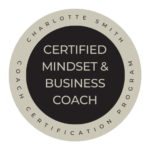


Agribusiness Leadership provides the necessary tools to unveil the fundamental principles of
Empowered Leaders that Trust themselves and the relationships they lead and leaders who are curious to discover who they are and who they lead.

What is your authentic voice as a leader?
Not the title on your business card, not the strategy you wrote last quarter—but the way you show up in your leadership, especially when no one’s watching.
In this week’s blog, I want to dig into something simple yet powerful: the three ways we express ourselves as leaders—and why that expression is shaping how your team responds to you, whether you realize it or not.
I was recently listening to a powerful post on LinkedIn from Israel Beck. Something he said stopped me in my tracks. It wasn’t flashy or complicated—but it was deeply rooted in what I believe about horizontal leadership: that leadership is less about power and more about presence.
And that’s where this blog begins. Because how you express yourself as a leader isn’t just about others—it’s about you first.
Let’s walk through the three ways you show up—your truest expression—and how that expression becomes your impact.
Your team can feel your belief—or your doubt—before you ever say a word.
When you believe in yourself, when you trust your capacity to figure things out, lead through hard moments, and navigate conflict with grace, you give your team something powerful: stability. That belief becomes a mirror for them to see what’s possible for themselves.
But when belief is shaky, leadership becomes reactive. And often, we don’t realize we’re expressing that doubt until we notice it reflected back in our team—hesitation, uncertainty, confusion.
Empowered leadership begins with belief. And belief isn’t loud—it’s steady.
We talk to ourselves constantly. But are we aware of the tone?
The way you think about yourself creates the lens through which you lead. If you’re constantly telling yourself, “I should be further ahead,” “I’m not doing enough,” or “They just don’t get it”—that inner dialogue is silently steering how you interact with your team.
Curiosity changes that.
When you approach yourself with curiosity—Why am I feeling stuck right now? What else could be true?—you create space to grow. And that inner tone of compassion and openness? It naturally flows outward.
The way you lead yourself is the foundation of how you lead others.
Growth isn’t a strategy—it’s a posture.
Your willingness to be a learner, not just a leader, is one of the most powerful expressions of leadership. When you lead with intentional curiosity, your team sees permission to do the same. They don’t need to be perfect—they need to be present.
Creativity comes from curiosity. And curiosity comes from slowing down long enough to ask better questions—not just of your team, but of yourself.
What am I learning in this season? What’s this challenge here to teach me? Where am I being invited to grow?
When you express yourself through belief, kind communication, and curiosity-driven growth—you don’t just lead. You inspire.
Your leadership becomes less about control and more about connection.
Less about being right, and more about being real.
If this resonated with you, I’d love to hear your thoughts. What stood out? What’s one way you want to express yourself more intentionally this week?

The Let Them Theory – Mel Robins
High Road Leadership – John Maxwell
Burned Out & Blaming Your Team?
This FREE 5-minute video explains what’s really going on—and what to do instead.